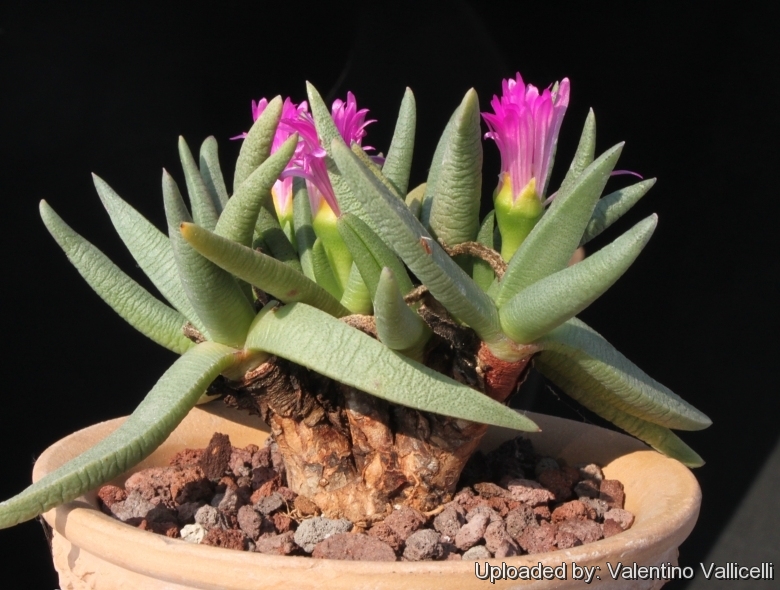
Marlothistella uniondalensis Photo by: Valentino Vallicelli
In cultivation the caudex will grow up to eight centimetres in diameter and the plant raises up to fifteen centimetres.
Origin and Habitat: Uniondale in the Little Karoo, Western Cape also in Beaufort West. Oudtshoorn, Prince Albert, Wesstern Cape. South Afric
Habitat: They are found in open patches among grasses along with sparce proteaceous and restionaceous vegetation about 2 m tall, or in Karroo vegetation.
Synonyms:
Common Names include:
AFRIKAANS (Afrikaans): Grasvygie
Description: It is a small compact plant with thick roots and thin tongue like leaves that grows mainly in spring and autumn. In the middle of the summer heat it usually takes a brief pause of growth.
Root: Distally brancing fleshy tap-roots caudex-forming. In cultivation the caudex will grow up to eight centimetres in diameter, the plant raises up to fifteen centimetres.
Leaves: Terete, long, narrow, sharply pointed about 45 mm long, 5 mm broad at the base making them difficult to detect among the grasses where it grows.
Flowers: Solitary, daisy-like, white, pale pink, to pink-magenta up to 35 mm in diameter.
Blooming season: Flowers from November to February with cold and even freezing temperatures.
Notes: Marlothistella ubiondalensis is not all that common, a bit of a specialist plant. It has a large taproot so it is very resistant to drought. When it is potted up, the plant can be progressively raised over the ground so that some of the roots can be seen and is especially cultivated for their looks. Architecturally it is a real stunner. When the ''caudex'' shape of the raised roots is adequately in evidence this plant is incomparable.
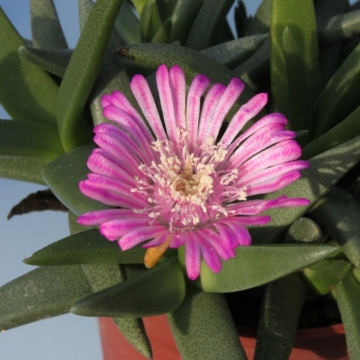 Marlothistella uniondalensis Photo by: Cactus Art
Marlothistella uniondalensis Photo by: Cactus Art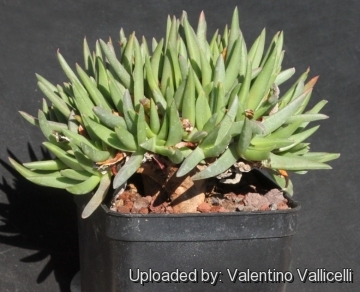 Marlothistella uniondalensis Photo by: Valentino Vallicelli
Marlothistella uniondalensis Photo by: Valentino Vallicelli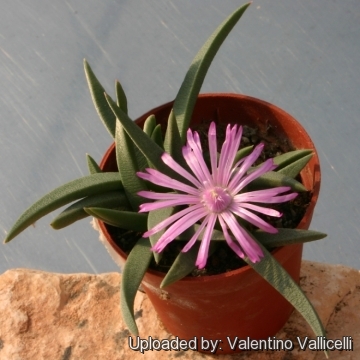 Marlothistella uniondalensis Photo by: Valentino Vallicelli
Marlothistella uniondalensis Photo by: Valentino Vallicelli Marlothistella uniondalensis Photo by: Valentino Vallicelli
Marlothistella uniondalensis Photo by: Valentino Vallicelli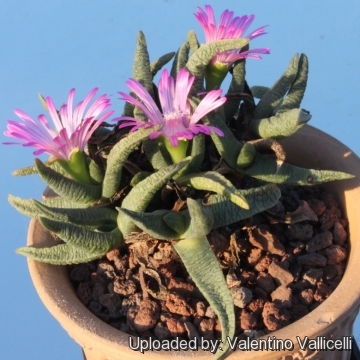 Marlothistella uniondalensis Photo by: Valentino Vallicelli
Marlothistella uniondalensis Photo by: Valentino VallicelliSend a photo of this plant.The gallery now contains thousands of pictures, however it is possible to do even more. We are, of course, seeking photos of species not yet shown in the gallery but not only that, we are also looking for better pictures than those already present.
Read More... Cultivation and Propagation: Prefer full sun to part sun but, should be protected from excessive heat and sun in summer as it will redden with more light exposure. Regular water in summer (but always allow to dry out before you water again), keep quite dry in winter. Needs deeper pot and excellent drainage to accommodate the tap root, It can be kept for years in a 7x7 cm pot, and should be repotted only every 2-3 years . It is also perfect for the bright windowsill. Frost hardy to -5° C (or less if dry). It will grow in the cooler parts of the year, and flowers, in winter if it gets good light (direct sunlight is essential to bloom well). It is probably dormant in summer so that it is usually recommended of don't water much in summer and don't be surprised if it doesn't grow at that time, but although they are better treated as winter growers they will anyway grow in summer if given water.
Propagation: Cuttings or (rarely) seeds















